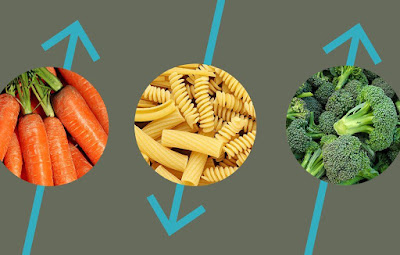How To Cut Carbs For Weight Loss
Several dietitians dictate us to reduce our carbs, while some recommend them down entirely. Then, there are certain diets that worsen the mixed messaging by asking us to pile up our plates with heaps of carbs. And matters are made further worse by diet plans that tell us that we mustn’t really eat carbohydrates, but only foods that are rich in carbohydrates, what does that even mean?
Research reveals that amongst certain people, cutting down all carbohydrates has proven highly effective in losing weight. However, it was only a matter of time before they got tired of eating broccoli, strawberries, and spinach in their attempts to cut down carbs. But the truth is, spinach, strawberries and broccoli are all rich in carbohydrates.
Dietitians reveal that they always deal with clients who are worried about their carb intake, and find it hard to pick out the right carbs for their daily diet. The issue is, there isn’t one or two carb-containing foods that you must stop eating, but rather, in order to be mindful about your carb-intake, you must understand the hierarchy of carbohydrates and understand which foods are healthy and which aren’t. All carbs cannot be treated equally, after all, the body gets most of its energy from carbs and if you cut them down entirely, you end up doing more harm than good.
Let’s take a look at this hierarchy ad determine which carb-containing foods are to be avoided or eaten less.
Carb-containing foods at the top of the carbohydrate pyramid are much more beneficial than the carb rich foods on the bottom. They tend to fill you up and satiate your hunger, as opposed to the carbs at the bottom of the hierarchy that have a denser amount of both, calories and carbs. Naturally, such foods also have a weaker nutrient profile with more calories and lesser nutrients.
As you begin to move up the hierarchy of carbs, you see that the carb-rich foods tend to have fewer carbs and calories as compared to the foods at the bottom. If you want to reap the health benefits of good carbs, you must enjoy more carb-containing foods at the top of the carb hierarchy, and reduce or cut down the foods at the bottom of the list. For instance, when you’re at social gatherings, avoid devouring a lot of fizzy drinks, sodas, cookies, pies, sugary desserts and other calorie-dense meals or at least, cut down your portion size.
If you want to reduce your calorie and carb intake to reduce those unwanted pounds, manage your weight and regulate your blood sugar levels, you must eliminate carbs such as refined grains, pasta, donuts, bagels and even rice. This healthy restriction will allow you to reap the more nutrition-rich carb-containing foods that are denser in carbohydrates and contain very few calories.
Make sure not to eliminate one group of carb-containing and calorie dense foods if you’re still enjoying certain foods from the hierarchical group below it. For instance, if you’re devouring cakes and pastries, don’t cut down on rice or bread.
It may be a bit confusing, but not understanding the hierarchy of carbohydrates can do a great deal of harm to both, your weight loss regime and regular daily diet. Here’s an easy plan to help you prioritize your healthy eating needs and reap immense weight loss success.
Tip # 1
On the first day of your diet, create a list where you will write down each and everything you’ve eaten. Don’t wait for the day to end before you start compiling because that can reduce your accuracy of remembering all the food items that you consumed. So, it’s best to make the list as the day continues.
Tip # 2
Examine all the food items in your fridge and pantry, and then, make a list of all the carbs that you’re eating along with their nutritional values according to the carbohydrate hierarchy. For instance, you must assign more importance to carb-containing foods like spinach and broccoli over cakes, bagels and pastas.
Tip # 3
Find healthier and nutrient-rich replacements for foods with heaps of added sugars, such as desserts and fizzy drinks, and refined carbs such as pastas, rice and bread. Eliminate these foods from your diet, and replace them with foods that are delicious and healthy.
Tip # 4
Don’t make any changes that you cannot follow through with consistency and regularity. Take out 2 weeks to begin a new diet that replaces all your unhealthy carb cravings with healthier options so that you can develop consistency rather than rushing up. Don’t overwhelm yourself, or else you won’t be able to carry out your diet regime.
Tip # 5
When you’ve eliminated foods with added sugars and refined grains from your diet, it’s time to add in green veggies, fresh fruits and berries. If the taste is a problem, then analyze your list and come up with three exciting and fun ways to devour more fruits and veggies, while decreasing your consumption of whole grains and starches, such as oatmeal, whole wheat pasta and whole grain bread. And eat as many fruits as you possibly can because they are capable of doing nothing but brimming you up with nutrients and antioxidants.



